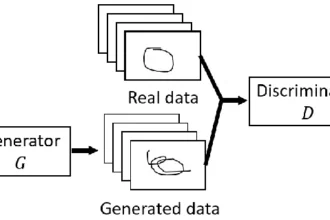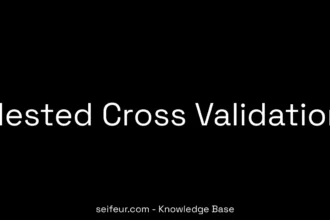Are you tired of feeling like you’re playing a guessing game when it comes to making decisions? Well, get ready to embrace the power of Bayesian Belief Networks – the secret weapon to making informed choices with confidence! In this blog post, we will unravel the mysteries behind Bayesian Belief Networks and explore their fascinating components. Whether you’re a tech enthusiast, a data analyst, or just someone curious about the world of probabilities, this is the ultimate guide that will leave you saying, “I never knew making decisions could be this exciting!” So buckle up and let’s dive into the world of Bayesian Belief Networks together.
Table of Contents
ToggleUnderstanding the Concept of Bayesian Belief Networks
Imagine a tapestry of interconnected threads, each representing a variable that influences and is influenced by those around it. This is the essence of Bayesian Belief Networks—a complex web of causality and probability. These networks are not mere diagrams; they are dynamic maps of understanding, depicting how different aspects of a system interact and affect one another. A Bayesian network encapsulates the dance of dependencies, where each node is a variable in the grand choreography of data, and the arcs are the causal linkages that direct their movements.
With each node encapsulating a variable, the Bayesian network becomes a visual storyteller, narrating the tale of dependency and conditional probabilities. These arcs that connect the nodes are not arbitrary; they are grounded in the rigor of Bayes’ theorem, a cornerstone of probability theory. The theorem’s formula, P(A|B) = P(B|A) P(A) / P(B), is the heartbeat of this network, pumping life into the model by quantifying how the knowledge of one event alters the likelihood of another.
| Concept | Definition |
|---|---|
| Bayesian Belief Networks | Graphical models that communicate causal information among a network of variables. |
| Bayesian Belief Networks Theory | A framework for describing and evaluating probabilities in interrelated variable systems. |
| Bayesian Model of Belief | A probabilistic dependency model represented graphically with interconnected nodes and arcs. |
| Bayesian Network Explanation | A mathematical model measuring conditional dependencies based on Bayes’ theorem. |
These networks serve as a potent tool for deciphering the complexities inherent in multi-variable environments. They allow us to gaze into the probabilistic cosmos and discern patterns that might otherwise be shrouded in uncertainty. Each node, with its conditional probability, tells a story of influence—a narrative of how it is shaped by the nodes it is connected to, and in turn, how it can shape them. This interplay of cause and effect, of action and reaction, is what makes Bayesian networks not just a theoretical construct but a practical instrument in the hands of data analysts and decision-makers.
As we prepare to unravel the components of a Bayesian network, keep in mind that this exploration is not just a delve into a mathematical abstraction. It’s a journey through a landscape where each variable holds the key to unlocking the mysteries of the data it represents. The power of Bayesian networks lies not only in their ability to model complex systems but also in their capacity to offer insights that lead to informed decisions, even in the face of uncertainty.
Components of a Bayesian Network
Imagine a Bayesian network as a masterful tapestry, woven with threads that represent the dynamic interplay between variables in a complex system. Each thread’s tension and connection to others capture the essence of how one event can influence another. This tapestry comprises two fundamental components that give it both form and function: the causal component and the numerical component.
The causal component is akin to the warp and weft that creates the tapestry’s intricate pattern. It is the structural backbone of the Bayesian network, showcasing a web of relationships that visually narrates the story of cause and effect. Each node, or vertex, in this network symbolizes a variable, a unique character in our probabilistic narrative. The arcs, or directed edges, trace the paths of influence, illustrating how the fate of one variable can be intertwined with another.
Transitioning from the abstract to the quantifiable, the numerical component breathes life into the causal skeleton. It assigns the conditional probabilities that detail the nature and strength of the relationships between variables. These probabilities are the colors that paint the depth and nuances of the narrative, allowing us to predict the likelihood of future events based on current knowledge. It is here, in the numerical realm, where data transforms into actionable insights.
Together, these two components create a Bayesian network that is not only a visual representation but also a functional model of joint probability distribution. By marrying the simplicity of the network’s graphical structure with the richness of probability theory, Bayesian networks offer a sophisticated yet accessible approach to deciphering the probabilistic dependencies within complex systems.
With this foundation laid out, it becomes clear how these networks are more than mere abstract constructs. They are powerful analytical tools, allowing decision-makers to navigate through the uncertainties of multi-faceted environments. Thus, the Bayesian network stands as a testament to the harmony between visual clarity and quantitative precision, setting the stage for informed decision-making amidst the inherent unpredictability of real-world situations.
Applications of Bayesian Networks
The ingenuity of Bayesian networks lies in their uncanny ability to distill complexity into a digestible form. These networks are not merely theoretical constructs; they are practical tools that weave through the very fabric of decision-making across diverse fields. Imagine standing at the crossroads of uncertainty, where a myriad of possibilities stretch out in all directions. Here, Bayesian networks serve as a compass, guiding you through the fog of probabilistic confusion to the clear light of informed choice.
In the realm of healthcare, the application of Bayesian networks is nothing short of revolutionary. Picture a seasoned medical practitioner, their mind a repository of vast clinical knowledge. They are confronted with a patient exhibiting a constellation of symptoms. In the past, the physician would rely solely on their experience and intuition to diagnose and treat. Now, however, they can enlist the support of a Bayesian network, meticulously crafted by medical experts, to offer a probabilistic assessment of various diagnoses based on the symptoms presented. This fusion of human expertise and algorithmic precision enhances the ability to determine the most appropriate course of action, potentially saving lives and improving outcomes.
It’s not only in medical diagnostics where Bayesian networks reveal their utility. Consider the intricate systems within a factory, where machinery hums in a symphony of productivity. When a component fails, the repercussions can cascade, halting production and incurring substantial costs. Here, Bayesian networks serve as a diagnostic tool, helping to pinpoint the root cause of a breakdown. By understanding the probabilistic relationships between various parts and potential failure points, maintenance teams can swiftly address the issue, minimizing downtime and maintaining the delicate balance of the manufacturing process.
Yet the reach of Bayesian networks extends far beyond the clinical and industrial realms. In the burgeoning field of data privacy, these networks play a pivotal role. Data scientists harness the power of Bayesian networks to generate synthetic datasets that mirror the statistical properties of the original data. This ingenious approach safeguards sensitive personal information while allowing for robust data analysis and machine learning, thus maintaining the integrity of privacy in our digital age.
In essence, Bayesian networks are the silent sentinels standing guard over a landscape riddled with uncertainty. They offer a beacon of clarity, allowing us to navigate the complex interplay of variables that shape our world. As we continue to unveil the potential of these networks, one can only anticipate the myriad ways they will further entrench themselves as indispensable tools for reasoning, prediction, and discovery in our quest to decipher the enigma of uncertainty.
Bayesian Networks and Joint Probability Prediction
Imagine a tapestry, intricately woven with threads of various colors representing different factors or variables. This is akin to the complex fabric of our world where multiple elements interconnect and influence one another. A Bayesian network is like a map of this tapestry, charting out the probabilistic relationships between these threads. It doesn’t just look at each thread in isolation but considers the entwined patterns they create together.
At the heart of a Bayesian network’s predictive power is its ability to calculate the joint probability of multiple outcomes. This capability is analogous to understanding not just the likelihood of rain but how that chance increases when dark clouds gather and the wind picks up. In the vast domain of healthcare, for instance, these networks don’t merely evaluate symptoms individually; they assess how the presence of one symptom might affect the likelihood of another, painting a holistic picture of a patient’s health.
Consider a patient exhibiting a range of symptoms. A Bayesian network might reveal that while each symptom individually suggests a common cold, the presence of all symptoms together might indicate a more serious condition, like pneumonia. This is the power of joint probability prediction – it allows us to see the forest for the trees, understanding the combined effect of multiple variables rather than just their separate occurrences.
This predictive prowess extends beyond healthcare into realms where the integration of multiple data points is crucial. In the arena of manufacturing, Bayesian networks are the silent guardians against operational halts, predicting the likelihood of machine failures by considering a symphony of factors from wear and tear to environmental conditions. They provide a preemptive lens, enabling interventions that can save time and resources.
Yet, the utility of Bayesian networks is not confined to prediction alone. They are a bridge between the known and the unknown, allowing us to traverse the gap with greater confidence. By representing complex systems through directed acyclic graphs, these networks encapsulate causal relationships that underpin our reality, offering a structured approach to understanding the interconnectedness of our world. Through this lens, we gain not only foresight but also insights, enabling us to make informed decisions amidst uncertainty.
In essence, Bayesian networks encapsulate the subtleties of interconnected variables with a clarity that is as visually compelling as it is quantitatively precise. As we continue to navigate the labyrinth of data in various fields, they remain an indispensable ally, charting a course through the probabilistic seas with the compass of joint probability prediction.
Q: What is Bayesian Belief Networks theory?
A: Bayesian Belief Networks are graphical models that communicate causal information and provide a framework for describing and evaluating probabilities when we have a network of interrelated variables.
Q: What is the Bayesian model of belief?
A: A Bayesian belief network is a graphical representation of a probabilistic dependency model. It consists of a set of interconnected nodes, where each node represents a variable in the dependency model and the connecting arcs represent the causal relationships between these variables.
Q: What are Bayesian networks in simple terms?
A: Bayesian networks are a type of Probabilistic Graphical Model that can be used to build models from data and/or expert opinion. They can be used for a wide range of tasks including diagnostics, reasoning, causal modeling, decision making under uncertainty, anomaly detection, automated insight, and prediction.
Q: What is a Bayesian network and why is it useful?
A: A Bayesian network is a compact, flexible, and interpretable representation of a joint probability distribution. It is also a useful tool in knowledge discovery as directed acyclic graphs allow representing causal relations between variables.





